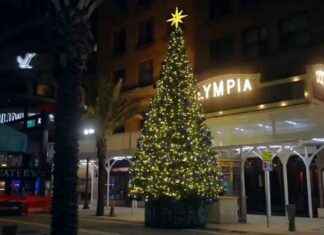The XVIII Repsol King’s Cup for Vintage Boats began this Friday with magnificent conditions for sailing. The northerly component wind, which began to blow early in the morning, allowed the start and finish of the regatta inside the port of Mahón and offered a unique visual spectacle in the Mediterranean.
The scenic beauty offered by the natural port of the Menorcan city, one of the largest in the world, is the ideal setting for the deployment of classic sailboats, which combine elegance and style and recover for sailors and spectators the true sense of what means navigation understood as an art.
The union of the wooden sailboats, half of them still rigged with the old trapezoidal sails, and the natural environment of the Mahonese roadstead favor each year the meeting of the best fleet of vintage and classic boats in the Mediterranean. In this edition the figure of 49 boats from 10 countries has been reached, one of the highest in history.
Classical sailing regattas have the particularity that, together with the participating owners and skippers, it is especially important to know the names of the designers of the sailboats, since that reference constitutes in itself an encyclopedia of the history of sailing.
Herreshoff, Nicholson, Sparkman
The Race Committee began to explore the idea of ??starting in port on Thursday afternoon, but did not want to commit until they were sure that the ideal conditions were recorded. At 11:00 a.m. this Friday, he finally confirmed the start of the regatta a short distance from land and in view of anyone who was on the promenade at that time. The fleet, divided into five categories based on the year of launch and the characteristics of each vessel, sailed in shifts, from 12:30 p.m. to 1:40 p.m.
The sailboats of the Big Boat, Classic and Spirit of Tradition classes sailed 20.5 miles to a beacon located in front of Cap den Font, in the southeast of Menorca, leaving Isla del Aire to port on their return to Mahón. The Época ships rounded this same islet to port and completed a 13-mile voyage. In all cases the finish line was located inside the port. The intensity and consistency of the wind, which blew between 15 and 20 knots, gave rise to one of the fastest races in recent years. The Spartan (1913), the first to complete the route of the Época class, spent just one hour and 53 minutes.
The French Viveka (1929), 22.5 meters long, starred in the long-awaited return of the Big Boats to the Repsol King’s Cup for Vintage Boats. The Bermudian schooner, designed by Frank Paine and currently built by Keith Mills, won the first leg against larger rivals, including Sumurun (1914, William Fife III), which came in second, followed by the imposing schooner Mariette (1915, Nathael Greene Herreshoff), almost 40 meters.
The departure and arrival of these giants of sailing were two of the most impressive moments of the regatta. The Mariette can deploy more than 1,000 square meters of sail area on her two masts. The outrageous sail of her mainmast (popel) is one of the largest in the world.
Pre-1950 units compete in two categories: Gaff Era (trapezoidal sail) and Bermudian Era (triangular sail). In the first of these groups there were no surprises. The Scud (1903), owned by the owner Patrizio Bertelli and skippered by the Brazilian Olympic five-time medalist Torben Grael, won the first round with an advantage of almost five minutes in compensated time over the Spartan.
Bertelli already made it clear in his previous participation in the Copa del Rey de Barcos de Epoca (2017), then aboard the Linet, that his goal is always to win, “whether in classics or in the America’s Cup”. Grael had announced in the morning that the Scud, designed by Nathael Greene Herreshof, is a “very fast and very competitive” boat when the wind picks up. And today was a windy day.
The American Spartan, despite his symbolic victory in real time, had to settle for second place. His 22.15 meters in length force him to give his rivals a lot of time. Provisional third position went to Paolo Zannoni’s Chinook, who had a lively fight with Scud throughout the race.
The legend of the Argentine designer German Frers was based on the results obtained more than 70 years ago by the Fjord III (1947), owned by owner and skipper W. Scott Perry. That legendary boat once again demonstrated its qualities this Friday, winning the first race of the XVIII Copa del Rey Repsol and running for the revalidation of the title it obtained in last year’s edition.
El Argyll (1948, Sparkman
No surprises in the Classics category (ships launched between 1950 and 1976), where the Argos (1964), owned by owner Bárbara Trilling, defended her rating in conditions that favored her larger rivals. The ship designed by Holman
The advantage of the Argos, which defends the title obtained last year, was extended by just over a minute with respect to the Giraldilla (1962, Sparkman
Legolas, a model from the Spirit shipyard launched in 1996, by the shipowner Jens Ricile, gave the bell in his particular fight with the Calima (1970, Sparkman
This Saturday the competition resumes with the second of the three scheduled tests. The forecasts indicate that the wind conditions may be practically identical to those of this first day.
—








